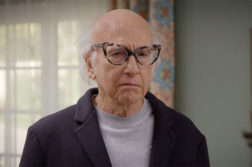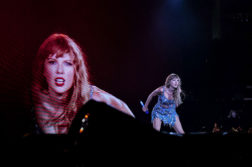One of the most voyeuristic things you can do when you visit someone else’s house is to take a peek inside their pantry or fridge. One glance and you might find out everything you needed to know about them and possibly some things you didn’t. Full fat or skim milk? Is that home-rendered goose fat in that jar? Or — horror of horrors — do I see a meal-for-one dinner in the back of the freezer?
While most of us will never be crazy enough to physically allow perfect strangers into our whitegoods, online, such inhibitions melt away. Offline prudes proudly declare themselves recreational gastronomic peeping toms as they file-share and download each other’s food porn.
It does seem curious, does it not, how something as sensory as food has found a life online. We can look but not touch; we can talk, but not taste. The answer is quite simple: what’s more social than food? Like any subject for which people have a passion, they’ll seize opportunities to share, think and talk about it — and how better than to join a social media community dedicated to indulging the subject? For example, if you’re a fan of Mexican food, you can join the 644,983 Facebook members dedicated to geeking out about all things jalapeño. Blogger groups have even been known to take their online relationships into the real world by organising social gatherings in order to experience food together in real time.
Critics moan that social media networks such as Twitter are littered with the minutiae of people’s lives ("still hungry after four courses, tweeps") — but yawn-worthy entries aside, many tweeters find engagement with like-minded foodies through sharing their experiences online.
From savvy home cooks publishing personal recipes to food journalists dropping tasty crumbs on le restaurant du jour, people from all corners of the food world are testing the social media waters with varying results.
Reporting a blow-by-blow description of each course on your iPhone at the restaurant table may keep your readers engaged, but as far as dining etiquette goes, Emily Post would be rolling in her grave. Questions of social media etiquette at the table are not neglected on the blogs.
However you choose to share, if you want to guarantee a response your contributions should be interesting, possibly provocative and, most importantly, relevant. And you DO want a response. After all, interaction is the end game when it comes to social media.
So how do you get your lunch re-tweeted? It’s all to do with what you become known for writing about.
One of Australia’s most followed food tweeters Rebecca Varidel is promoting quality produce and championing food issues — like the recent furore over unpasteurised cheese — to her 24,656 followers.
Food blogger Susan Thye says that for her — and for her impossibly rapid metabolism — it’s to do with her love of all things dessert-related and so breakfasts made up of ice-cream, biscotti and melted chocolate bars get showcased online, as does her obsession with pâtissier/enfant terrible Adriano Zumbo’s sorbet-hued macaroons.
For foodies, social media can be a valuable resource for everything from cooking tips to sourcing hard-to-find ingredients.
Chef Michael Ryan from The Provenance restaurant in Beechworth, Victoria, recently went on the hunt for borage flowers for a Sydney event. Unable to find them through his usual channels, he reached out to the Twitterverse for help. A few tweets later, he had located a source for the tiny edible Syrian flowers for his dish of Oxley zucchini salad, Tom Cooper smoked salmon, Parmesan consommé, Milawa goat curd and capers.
When it comes to restaurant recommendations, the public are discovering an entirely new breed of food reportage online. Traffic to amateur food blogs now rivals that passing through their commercial counterparts. According to traffic monitor Website Outlook, Sydney blog Not Quite Nigella receives an estimated 9615 daily visits, while the commercial site Best Restaurants clocks in with around 8,715.
Mostly, food bloggers don’t write like Anthony Bourdain — although some claim to come close. The thing is, you don’t need to be a brilliant writer to have a blog. Many, in fact, are downright terrible. What they are, however, is honest, passionate and engaging, and because most don’t turn a dime for their time, there’s a level of integrity that comes with the territory.
That passion — "We do it because we effin’ love it" — has got a lot going for it. It certainly explains the lengths some bloggers go to, whipping out a DSLR camera in full view in the middle of a packed restaurant — often to the chagrin of both chefs and owners alike — just to give readers a taste of what they might expect if they choose to dine there.
The instant gratification offered by sites such as Twitter gives the ordinary food-obsessed punter a chance to rub virtual shoulders with the knife-wielding world of celebrity chefs.
Jamie Oliver, Neil Perry and Jared Ingersoll all regularly tweet their thoughts on food, giving followers updates about ingredients, kitchen dramas and other matters. For the most part, it’s actually the chefs who are furiously typing out posts between courses rather than a minion from the marketing team. With chefs touted as the new rock stars, this live interaction offers a level of accessibility and interaction that resonates with followers.
Television shows like Masterchef have also helped propel unknown wannabes and unlikely heroes into the mainstream spotlight. Who would have thought Matt Preston, aka The Cravatted One, (rightly) better known more for his food writing than his nominations for Cleo Bachelor of the Year, would reach a point of inciting swoon-worthy adulation from the ladies and back-slapping admiration from the men?
If 47,111 Facebook and 2854 Twitter fans — at last count — are anything to go by, Masterchef is as big a deal online as it is onscreen. When the series was being broadcast, die hard fans even started chat rooms in which multi-tasking devotees could watch the show while engaging in real-time discussion and presumably also cooking their own dinners to boot.
The ripple effect that these shows have had on the Australian public can’t be denied; just look at the sales of potato ricers, pig’s trotters and croquembouche moulds for starters. Whether subsequent series will have as big an impact is yet to be seen, but it’s clear that we do seem to be progressing from our humble meat and three veg origins toward something a little more adventurous.
The online uptake of food-related discussion might just be a barometer for changes to mainstream Australia’s food climate. However you tweet it, it’s certainly an excellent addition to our national diet.
Donate To New Matilda
New Matilda is a small, independent media outlet. We survive through reader contributions, and never losing a lawsuit. If you got something from this article, giving something back helps us to continue speaking truth to power. Every little bit counts.



